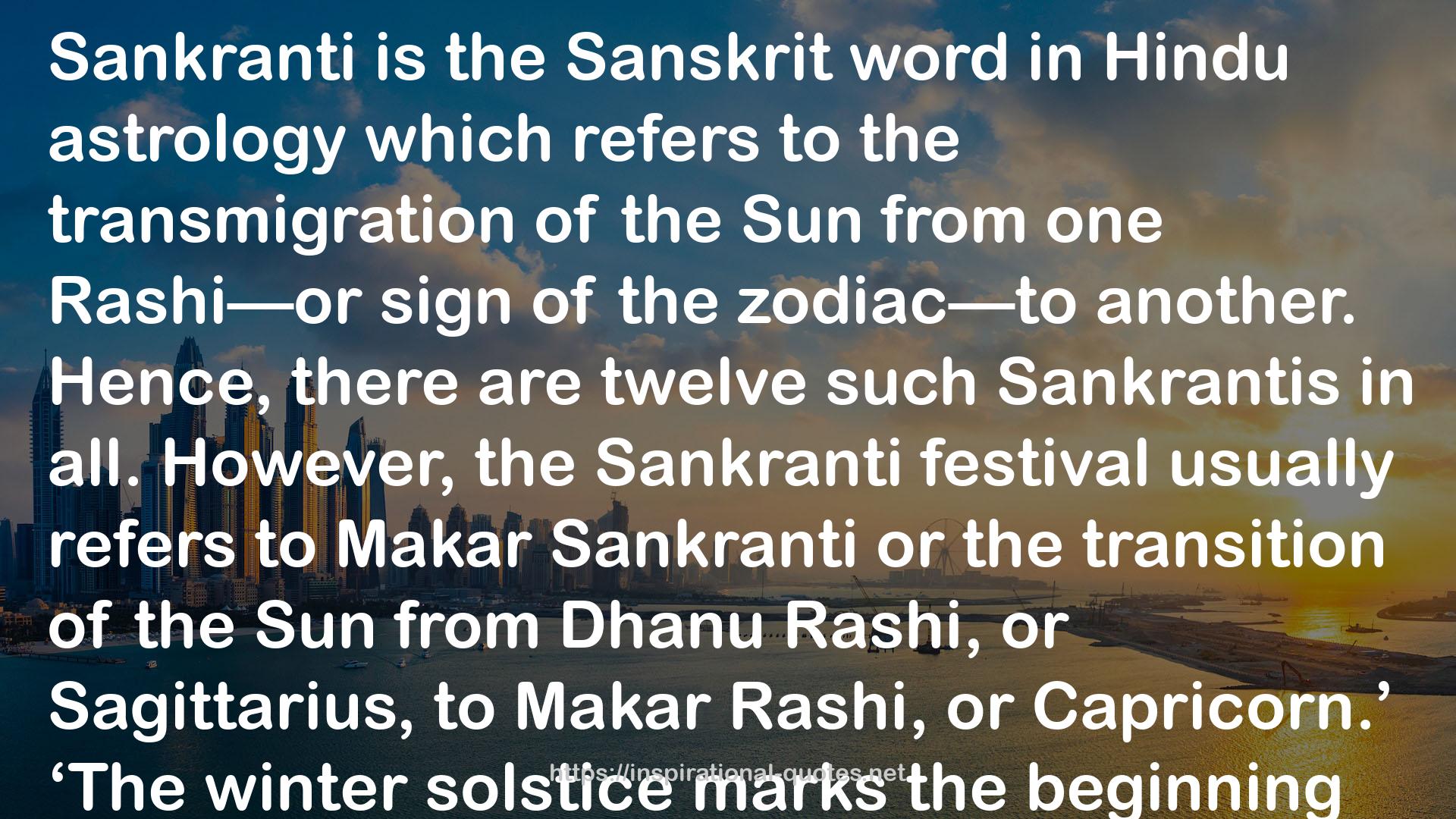" Sankranti is the Sanskrit word in Hindu astrology which refers to the transmigration of the Sun from one Rashi—or sign of the zodiac—to another. Hence, there are twelve such Sankrantis in all. However, the Sankranti festival usually refers to Makar Sankranti or the transition of the Sun from Dhanu Rashi, or Sagittarius, to Makar Rashi, or Capricorn.’ ‘The winter solstice marks the beginning of the gradual increase in the length of days. Scientifically, the shortest day of the year is around the twenty-first or twenty-second day of December, after which the days begin to get longer and the winter solstice begins. Hence, the Uttarayana, northern movement of the Sun, is actually 21 December, which was originally the day of Makar Sankranti too. But because of the Earth’s tilt of 23.45 degrees and sliding of equinoxes, Ayanamsa, longitudinal change, occurs. This has caused Makar Sankranti to slide further down the ages. A thousand years ago, Makar Sankranti was on 31 December and is now on 14 January. Five thousand years later, it shall be by the end of February, while in 9,000 years it shall come in June. "
― Mahendra Jakhar , The Butcher of Benares
